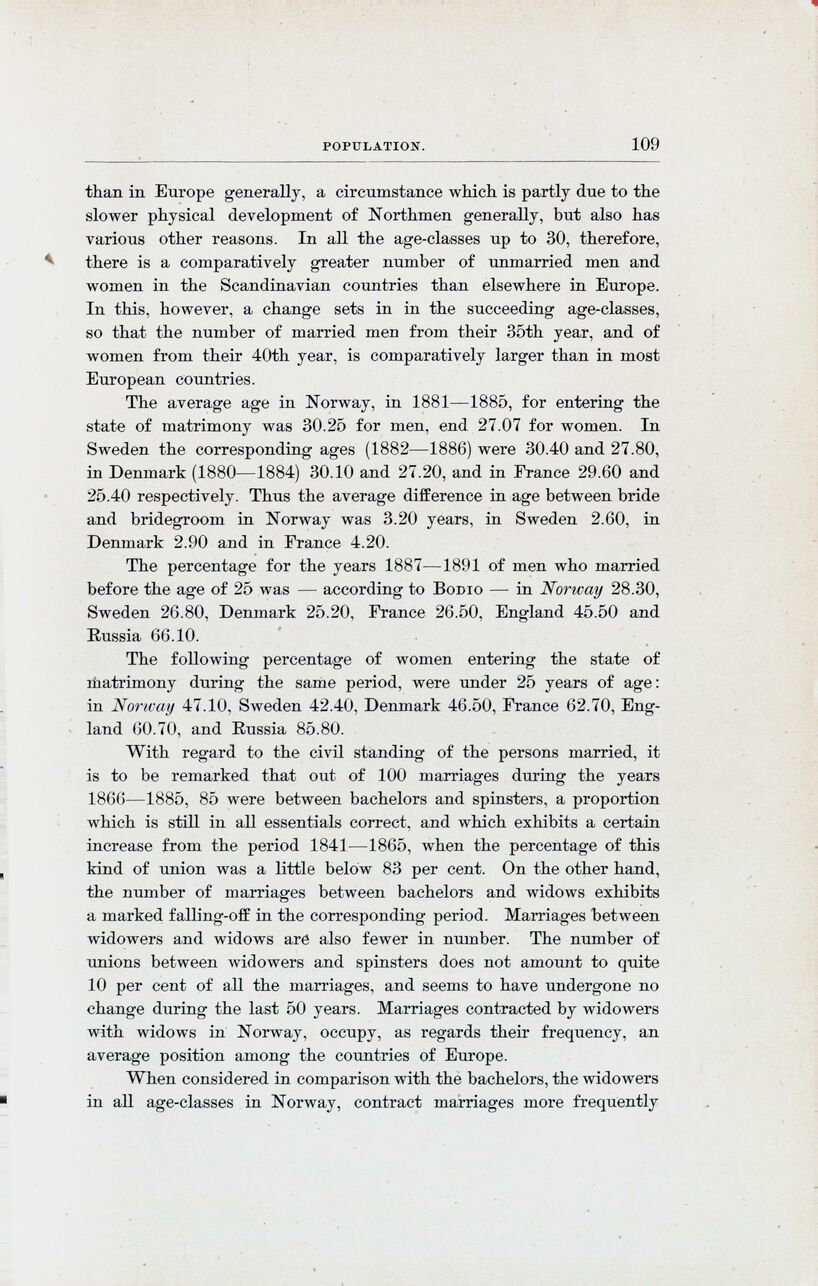
Full resolution (JPEG) - On this page / på denna sida - Population, by G. Amnéus

<< prev. page << föreg. sida << >> nästa sida >> next page >>
Below is the raw OCR text
from the above scanned image.
Do you see an error? Proofread the page now!
Här nedan syns maskintolkade texten från faksimilbilden ovan.
Ser du något fel? Korrekturläs sidan nu!
This page has been proofread at least once.
(diff)
(history)
Denna sida har korrekturlästs minst en gång.
(skillnad)
(historik)
than in Europe generally, a circumstance which is partly due to the
slower physical development of Northmen generally, but also has
various other reasons. In all the age-classes up to 30, therefore,
there is a comparatively greater number of unmarried men and
women in the Scandinavian countries than elsewhere in Europe.
In this, however, at change sets in in the succeeding age-classes,
so that the number of married men from their 35th year, and of
women from their 40th year, is comparatively larger than in most
European countries.
The average age in Norway, in 1881—1885, for entering the
state of matrimony was 30.25 for men. end 27.07 for women. In
Sweden the corresponding ages (1882—1886) were 30.40 and 27.80,
in Denmark (1880—1884) 30.10 and 27.20, and in France 29.00 and
25.40 respectively. Thus the average difference in age between bride
and bridegroom in Norway was 3.20 years, in Sweden 2.60, in
Denmark 2.90 and in France 4.20.
The percentage for the years 1887—1891 of men who married
before the age of 25 was — according to Bodio — in Norway 28.30,
Sweden 26.80, Denmark 25.20, France 26.50, England 45.50 and
Russia 66.10.
The following percentage of women entering the state of
matrimony during the same period, were under 25 years of age:
in Norway 47.10, Sweden 42.40, Denmark 46.50, France 62.70,
England 60.70, and Russia 85.80.
With regard to the civil standing of the persons married, it
is to be remarked that out of 100 marriages during the years
1866—1885, 85 were between bachelors and spinsters, a proportion
which is still in all essentials correct, and which exhibits a certain
increase from the period 1841—1865, when the percentage of this
kind of union was a little below 83 per cent. On the other hand,
the number of marriages between bachelors and widows exhibits
a marked falling-off in the corresponding period. Marriages between
widowers and widows are also fewer in number. The number of
unions between widowers and spinsters does not amount to quite
10 per cent of all the marriages, and seems to have undergone no
change during the last 50 years. Marriages contracted by widowers
with widows in Norway, occupy, as regards their frequency, an
average position among the countries of Europe.
When considered in comparison with the bachelors, the widowers
in all age-classes in Norway, contract marriages more frequently
<< prev. page << föreg. sida << >> nästa sida >> next page >>